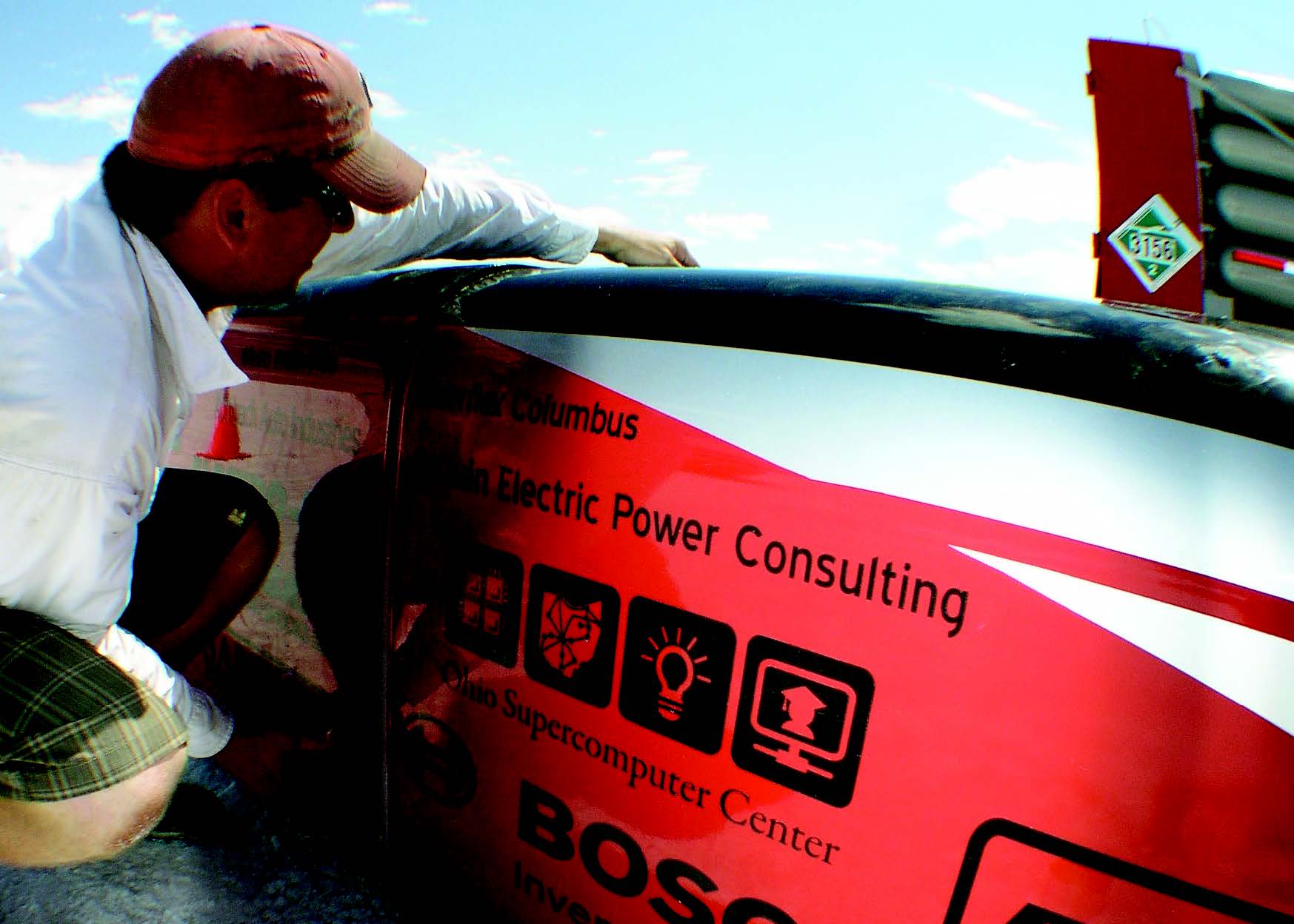Buckeye Bullet 2, the world’s first land-speed race research vehicle powered by hydrogen fuel cells, is designed and built by students at The Ohio State University’s Center for Automotive Research.
Their goal? To beat the U.S. land speed record for its category set by the first Buckeye Bullet in 2004.
The Bullet 2 team is cautiously optimistic that the streamliner will break that 315 mph record. The long, low, cylindrical racer proved it was well on its way during the 2007 Racing World Finals at the Bonneville Salt Flats in Utah, when it posted a single-run speed of 224 mph — the fastest speed ever recorded for a fuel-cell powered vehicle.
Designers opted to replace the battery concept of the original Bullet with more powerful hydrogen fuel cells last year. However, fuel cells, unlike batteries, don’t store energy, and one of the biggest challenges is turbocharging the two 500-pound fuel cells to churn power without overheating.
Solving these design challenges is just one way students involved with the Buckeye Bullet project gain hands-on engineering, business, teamwork, and leadership training. Students partner with more than 50 companies from various industries, including the Ohio Supercomputer Center.
Kimberly Stevens, an OSU senior majoring in aeronautical engineering, tapped the resources at OSC to simulate the shape of the Bullet 2 and, using computational fluid dynamics, model its aerodynamics prior to wind tunnel tests. OSC staff members worked with Stevens to leverage all she could from her programs, especially meshing, batch processing, and fluid-solid modeling.
The entire experience provides team members with a competitive advantage when seeking positions in the global engineering market. Stevens, who plans to begin a master’s degree program at Ohio State in 2008, has landed two challenging jobs because of her experience: a co-op position with Honda Research and Development and a research job at Ohio State’s Department of Aerospace Engineering.
“Having access to the Ohio Supercomputer Center’s resources allows me to apply what I’m learning in class. I have grown to thoroughly enjoy computational fluid dynamics and intend to make a career out of it,” Stevens said.
--
Project Advisor:Giorgio Rizzoni, Ph.D., Director, Center for Automotive Research, The Ohio State University
Project Title: Buckeye Bullet 2
Primary Sponsors:
• Ballard Power Systems
• Ford Motor Company
• Rausch
For more information: www.buckeyebullet.com
